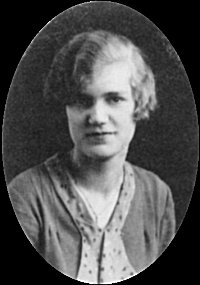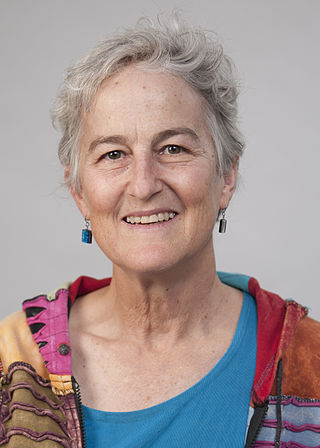History of Women in Urban Environments
Care-Work and Gender Roles

Care-Work in the context of domestic environments, as defined by Silvia Federici, is a “form of gendered economic oppression and an exploitation upon which all of capitalism rests”. [3] Historically, the responsibilities of domestic work and reproductive labor have fallen exponentially heavier on women. This unjust and unequitable share of responsibilities have prevented women from pursuing goals and freedoms outside of domesticity. [3]
From the Stone Age to the pre-industrial societies, women were responsible for child-care and other domestic activities such as agriculture, cooking, cleaning, and making clothes while men engaged in hunting and building activities. [3] These divisions came from biological aspects that made children more dependent of women while men had stronger physical compositions that made other activities less risky for them.[ citation needed ] As nomadic civilizations started to settle, technological developments guided communities into more complex systems of relationships, economics, and political organization, as well as an increased diversification of service needs and labor sectors. Since women were the ones who could birth and breast feed, childcare continued to be disproportionately put on women, while men were increasingly being liberated from reproductive and care-work responsibilities. [2] [4]
With the Industrial Revolution, a rapid growth of settlements made the binary gender imbalance more dramatic, forcing women to limit their contribution to society to the boundaries of domestic environments. [5] Federici claims that this “enclosure was made natural, as if domesticity was simply women’s inherent condition and desire”. [3] The periods of this transition and the strategies of oppression vary from country to country, but the spatial division between residential and socio-economic centers and the unequal empowerment between men and women remain at the root of inequitable urban environments across the world. [6]
The economic growth and social stability of our societies is reliant on women as they give birth and raise the labor force, as well as take care of domestic environments. Women handle this type of work without receiving any compensation and are forced to give up other economic or professional opportunities. These limitations make women dependent on men for money, which has a direct effect on their freedoms and agency. [3] Moreover, non-nuclear families also suffer from this inequality, as families led by a female partnership struggle to achieve economic stability with lower wages than men. Males that form a family also struggle to raise a family while balancing the labor demands put on this gender. [2]
Women who join the labor force struggle to care for children and housework and often delegate their responsibilities to lower-income women for low wages. Consequently, women involved in paid childcare are often forced to move away from their own children. [2] Women who join the labor force, are often called “domestic failures”. [3] Professional women also find themselves having to work harder to compete in a male economy, are paid lower wages and sometimes feel obliged to sacrifice marriage or childbearing for independence and professional growth. The strong imbalance of reproductive labor and domestic responsibilities between genders has direct and destructive consequences to economic development, environmental sustainability, democracy, health, childcare, and the just development of cities. [7]
Political scientist, Hannah Arendt, claimed that “the city is an organized memory, and in history women are the forgotten”. [8] Gender shapes the way that women can move through the city and the choices that are available to them. [2] The way cities have been built has contributed to enforcing patriarchal family, social and labor roles. [3] Geographical segregation, displacement, discrimination, and poverty have further influenced the urbanization processes and worsened women's quality of life. [6]
It is important to note, however, that women are a heterogenous group and differences in race, socio-economic status, education, income, sexual orientation, ethnicity, health, and other factors affect the degree and the ways in which patriarchal systems affect women's lives and urban experience. Indigenous and black women, for example, have been accused of contributing to urban crime for birthing uneducated and poor children. [2] This type of discrimination has contributed to these women being more affected by processes of urban gentrification, neighborhood deterioration and have even been submitted to forced sterilization. [9] [2]
Historically, cities have also offered women more freedom than rural communities. The options available to women are exponentially higher in cities due to their inherent demographic heterogeneity, size, and market-driven focus.
Decision-Making and Design of Urban Space
Built environments are said to reflect the values of the societies that built them. However, in industrial and post-industrial civilizations, built environments are often more a manifestation of the values specifically of the people with the power to build them. [5] Jane Dark, a feminist geographer, defended that “any settlement is an inscription in space of the social relations in the society that built it, our cities are patriarchy written in stone, brick, glass and concrete”. [2] The built environment has a level of permanence and durability that if done conservatively can represent ideas that are no longer in line with the values and needs of the current communities. [2] The commodification of space can also give place to a built environment that does not acknowledge, respond, or respect the historical, cultural, and social influence of a specific place, and thus buildings play an important role in normalizing or promoting inequality. [10] The buildings and infrastructure that define our cities have a direct and significant influence in the way people live their lives and the choices that are available to them. [5]
Cities are designed and planned by architects, urban planners, engineers, and policy makers. All fields that have historically been dominated by men. Thus, women have lacked representation and participation in the planning of urban space. According to the Women in Architecture department of the AIA, as of 1958 only 1% of registered architects were women. In 1999, the number had grown to 13.5%. As of 2020, only 17% of registered architects are women. [11] Women in the field continue to face challenges such as getting their voices heard, encountering glass ceilings, and being excluded from leadership positions. [11] Social geographer, Liz Bondi, argues that “simply adding women to the profession” will not necessarily mean that patriarchal systems are being challenged. Women in the fields of design and planning can still enforce patriarchal systems, often because how strongly these are embedded in our culture and professional education. [12] Biases in the research done by the field are also generated by “citational reliability”, where articles are for the most part written and influenced by a strict typology of middle-aged white men. [2] Moreover, the inclusion of women in the field and as imagined users of urban environments have also been disproportionate across race, social status and sexual orientation. [3]
Feminist urbanism establishes that cities have been designed based on a generalization of users, a focus on the nuclear family and a concept of neutral design. [2] Architecture has also based itself on the ideal of gender as binary and has supported the traditional gender roles that take men as the main users of the city. [13] Both concepts are increasingly not representative of the realities of contemporary societies. Major assumptions on behavioral patterns and a focus on planning taking as a typical urban citizen a white, heterosexual, abled-bodied, middle-income man has produced spaces that ignore the needs of other groups. [3] Women experience the city with physical, economic, and social barriers that are either gendered or not adequate for their unique set of needs. Inés Sánchez de Madariaga argues that recognizing women as urban individuals and understanding the key differences in the way they experience daily life in cities (in comparison to men) is an important step to achieve just and equitable urban environments. [6]










